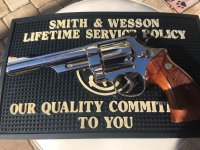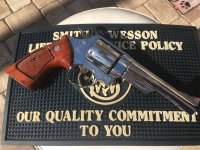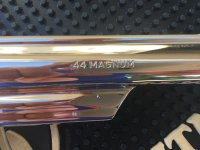The prevailing wisdom is a 15% reduction.
The same job performed at Bubba's Chrome & Bumper Emporium makes for a 50% reduction---and that, of course, is because it ain't the same job----it just sort of looks like it---from a distance-----the further the better!
I had one once---a 5" Registered Magnum which I surmised had been taken home and put in a sock drawer by the Lt. So & So, to whom 15 of the identical guns had been shipped. My supposition was supported by the fact everything under the sideplate appeared to be brand new.
Later on, having discovered 5 little bitty stars----well hidden every place it had a place (frame/cylinder/yoke/barrel/sideplate), I decided it had been completetly rebuilt/refinished by the factory.
Then, after succumbing to a bad case of purist, I sold it.
I keep telling God I wish I had it back. No such luck!
As an aside, I've never seen a factory refinished gun (blue or nickel) that I could tell was refinished----aside from the markings on it that told me so. That figures when you consider the fact the refinish was done by the same staff using the same equipment used for regular production.
Ralph Tremaine




